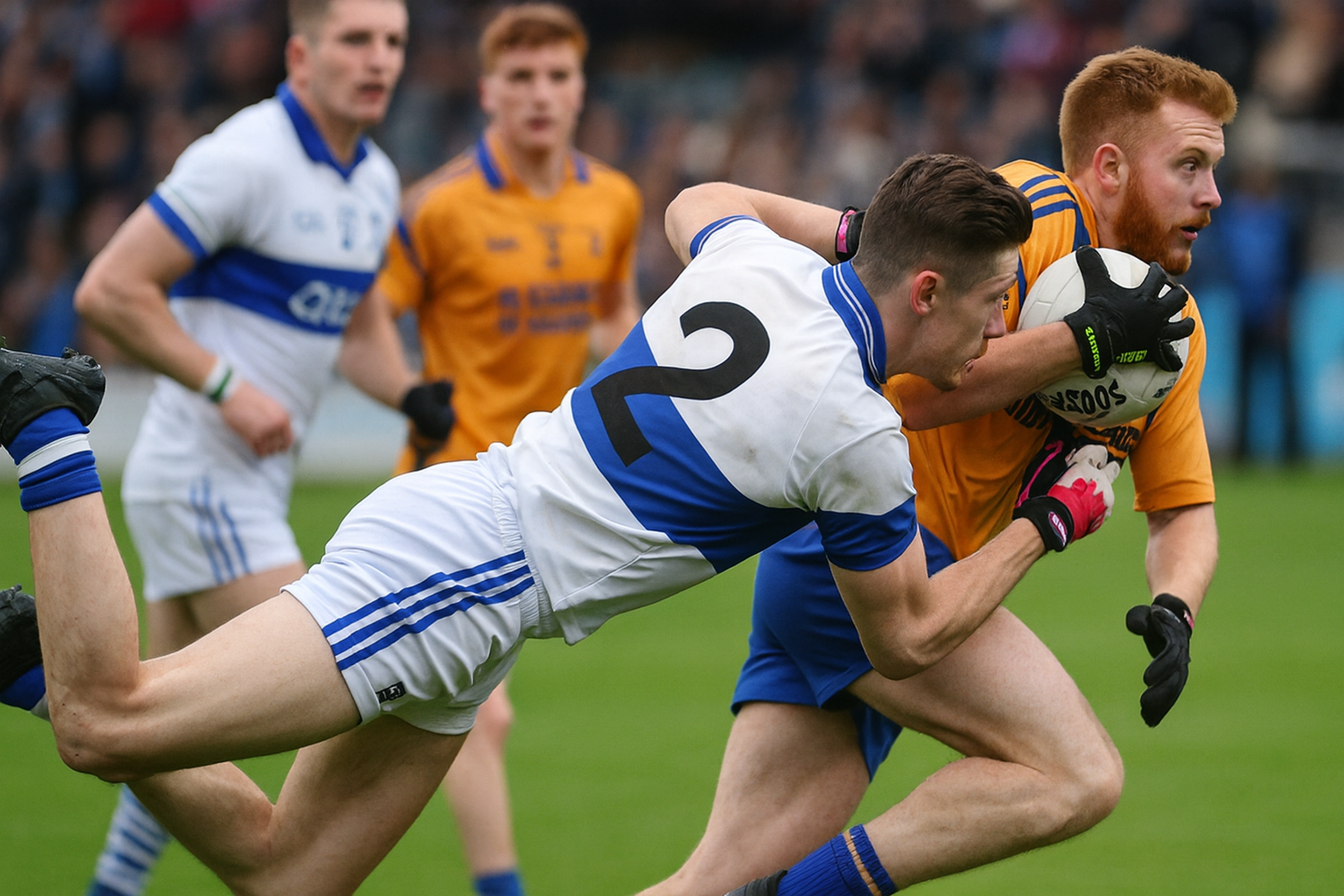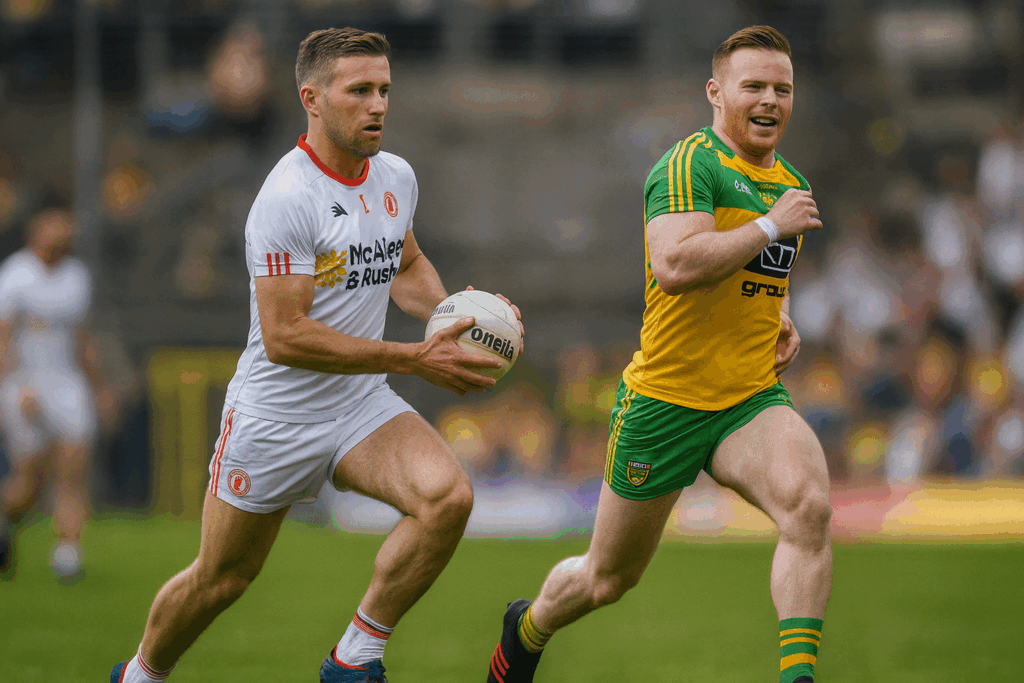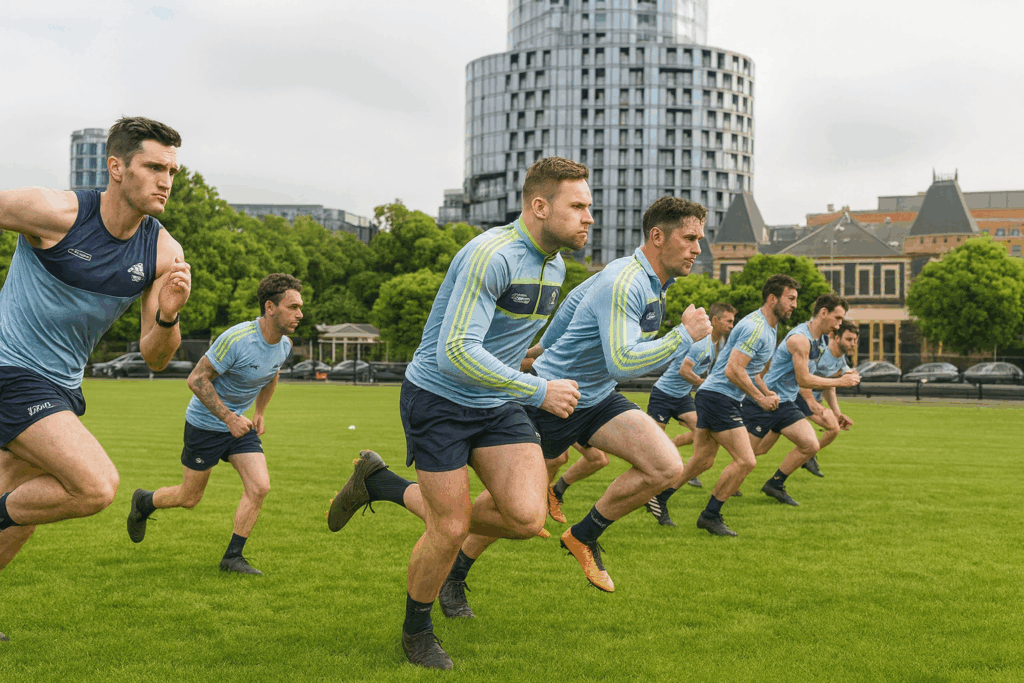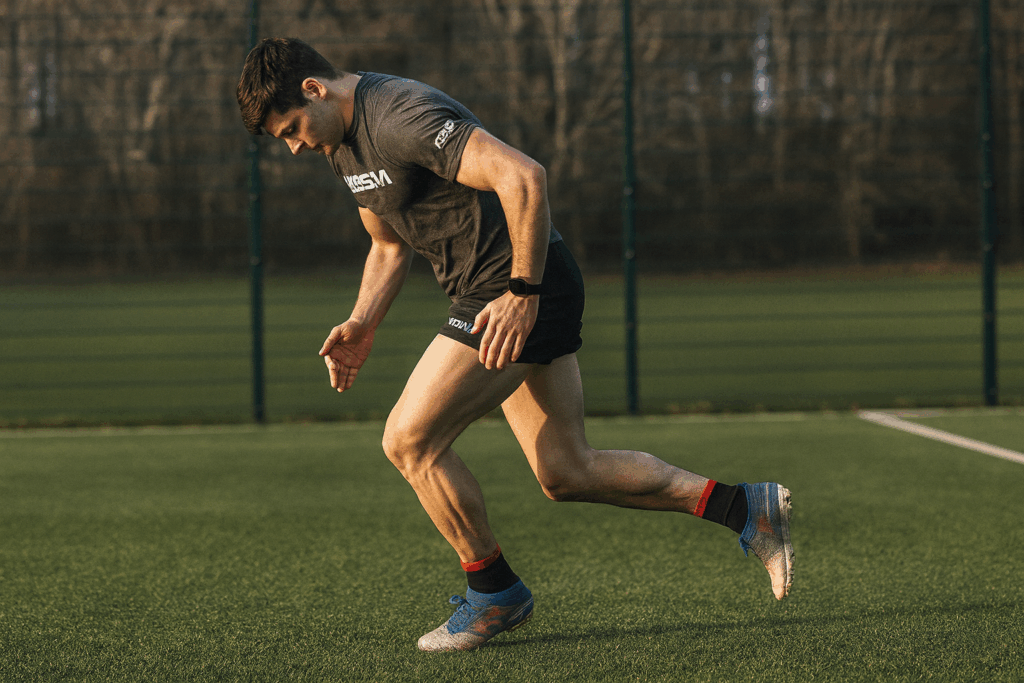Introduction
Gaelic football is an intermittent high-intensity game, characterised by frequent high-speed running interspersed with bursts of acceleration. Acceleration is a critical component of match performance, enabling players to react quickly, win contests, and create or close down space during play. This blog explores how often and for how long inter-county Gaelic football players accelerate during matches, providing actionable insights for players and coaches.
Study Overview
Thirty-six inter-county Gaelic football players were monitored using GPS technology during 19 matches across two seasons. These matches were part of the Division 1 National Football League and All-Ireland Championship series.
The study measured:
- Number of accelerations performed.
- Acceleration distance.
- Duration of accelerations.
- Maximum acceleration achieved.
To provide further insights, the game was divided into fourteen 5-minute periods, and changes in acceleration metrics were analysed across these intervals.
Key Findings
1. Acceleration Volume and Distance
- Average Accelerations per Game: 166.
- Average Acceleration Distance: 3,739m.
In comparison:
- High-Speed Running Distance (≥17 km/h): 1,563m.
- Very High-Speed Running Distance (≥22 km/h): 534m.
These results show that acceleration contributes significantly to the total workload during matches, even exceeding high-speed and very high-speed running in terms of distance covered.
2. Time Spent Accelerating
Players spent approximately 18 minutes per game accelerating, highlighting the repeated and sustained demands for acceleration throughout a match.
3. Maximum Acceleration
The players reached an average maximum acceleration speed of 24.7 km/h, showcasing the high-intensity bursts required during critical moments of play.
Acceleration Patterns Over Time
The analysis of 5-minute intervals revealed variations in acceleration output across the game. Players exhibited:
- Higher acceleration outputs in the early phases of matches.
- A decline in acceleration volume and intensity during later periods, reflecting fatigue.
This trend underscores the importance of not only improving acceleration performance but also enhancing the ability to sustain acceleration capabilities over the course of a game.
Implications for Training
The findings confirm that acceleration is a fundamental component of Gaelic football. To optimise performance, players and coaches should design training programmes that reflect the acceleration demands of match play.
1. Focus on Maximum Acceleration
Improving maximum acceleration characteristics provides players with an edge during critical moments, such as:
- Competing for possession.
- Breaking away from opposition defenders.
- Closing down attacking players.
Training Recommendations:
- Technical acceleration drills to improve mechanics (e.g., sled pushes, resisted sprints).
- Sprint intervals with a focus on explosive starts over short distances (10–20m).
2. Develop Repeat Sprint Capacity
Maintaining acceleration performance throughout the game requires a focus on repeat sprint ability. This enhances a player’s capacity to repeatedly perform high-intensity efforts without significant drops in performance due to fatigue.
Training Recommendations:
- Repeated sprint drills with short recovery periods.
- Small-sided games at high intensity to simulate match scenarios.
- High-intensity interval training (HIIT) with acceleration bursts.
3. Incorporate Acceleration into Sport-Specific Training
Acceleration should be integrated into game-like situations to improve application in match contexts. This includes:
- Acceleration drills combined with ball-handling skills.
- Reaction-based drills to mimic real-game scenarios.
- Position-specific acceleration training (e.g., forwards focusing on quick breaks, defenders on closing down attackers).
Why Acceleration Matters in Gaelic Football
Acceleration plays a pivotal role in both attacking and defensive situations. Players who can accelerate rapidly and sustain this ability over time will have:
- A greater chance of winning contests for possession.
- Improved ability to exploit gaps in the opposition defence.
- Increased effectiveness in closing down space and applying pressure during defensive phases.
By prioritising acceleration in training, players can gain a competitive advantage and improve their overall contribution to the team.
Conclusion
Acceleration is a key performance indicator in Gaelic football, with players accelerating an average of 166 times per match, covering nearly 3,739m. To compete effectively, players must not only develop their maximum acceleration capabilities but also enhance their ability to repeat these efforts throughout the game.
Training should incorporate technical acceleration drills, position-specific scenarios, and repeat sprint training to reflect the demands of match play. By doing so, players can maximise their potential, dominate critical moments, and maintain high performance across the full duration of the game.





